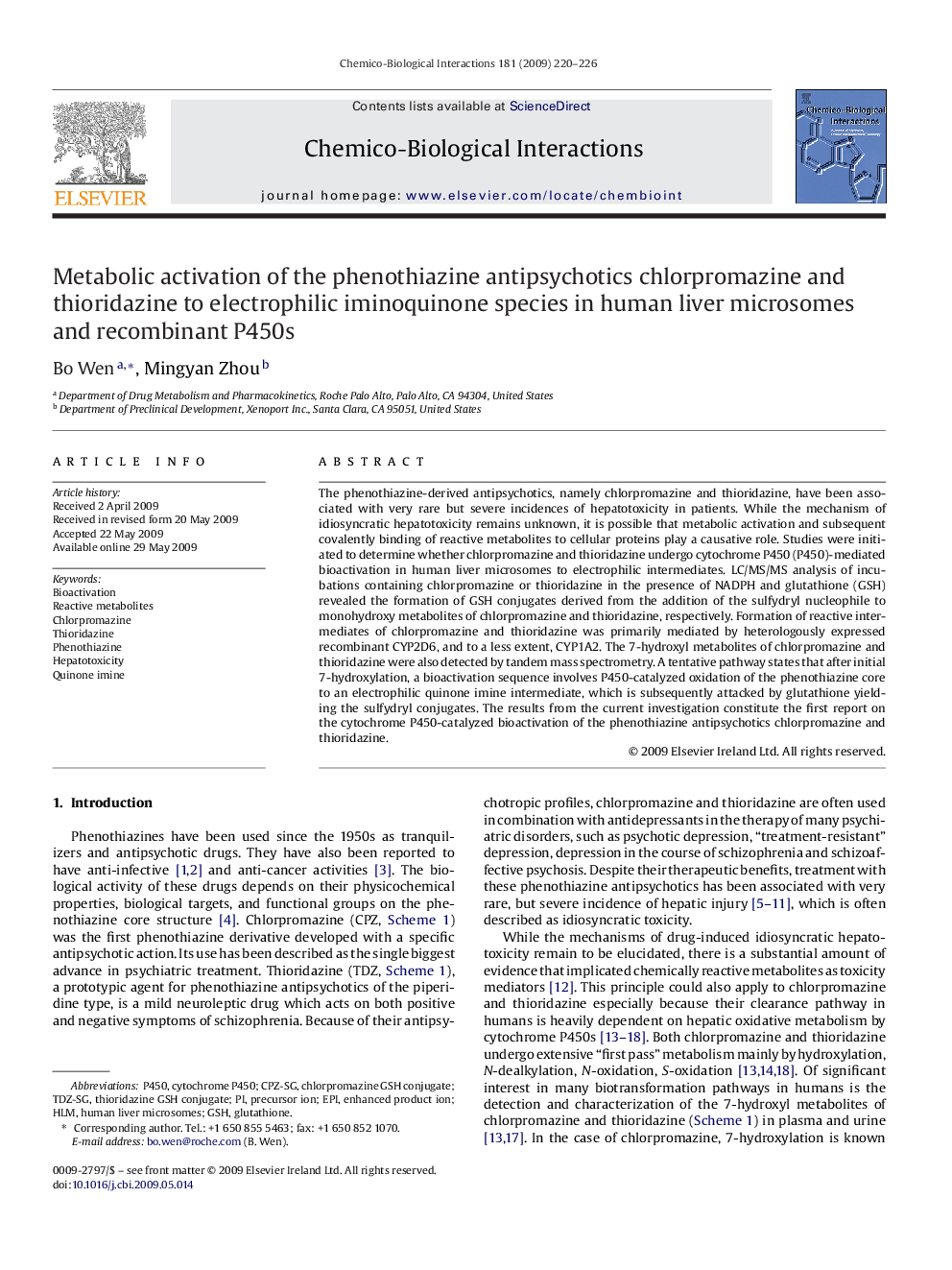| Article ID | Journal | Published Year | Pages | File Type |
|---|---|---|---|---|
| 2581288 | Chemico-Biological Interactions | 2009 | 7 Pages |
The phenothiazine-derived antipsychotics, namely chlorpromazine and thioridazine, have been associated with very rare but severe incidences of hepatotoxicity in patients. While the mechanism of idiosyncratic hepatotoxicity remains unknown, it is possible that metabolic activation and subsequent covalently binding of reactive metabolites to cellular proteins play a causative role. Studies were initiated to determine whether chlorpromazine and thioridazine undergo cytochrome P450 (P450)-mediated bioactivation in human liver microsomes to electrophilic intermediates. LC/MS/MS analysis of incubations containing chlorpromazine or thioridazine in the presence of NADPH and glutathione (GSH) revealed the formation of GSH conjugates derived from the addition of the sulfydryl nucleophile to monohydroxy metabolites of chlorpromazine and thioridazine, respectively. Formation of reactive intermediates of chlorpromazine and thioridazine was primarily mediated by heterologously expressed recombinant CYP2D6, and to a less extent, CYP1A2. The 7-hydroxyl metabolites of chlorpromazine and thioridazine were also detected by tandem mass spectrometry. A tentative pathway states that after initial 7-hydroxylation, a bioactivation sequence involves P450-catalyzed oxidation of the phenothiazine core to an electrophilic quinone imine intermediate, which is subsequently attacked by glutathione yielding the sulfydryl conjugates. The results from the current investigation constitute the first report on the cytochrome P450-catalyzed bioactivation of the phenothiazine antipsychotics chlorpromazine and thioridazine.
